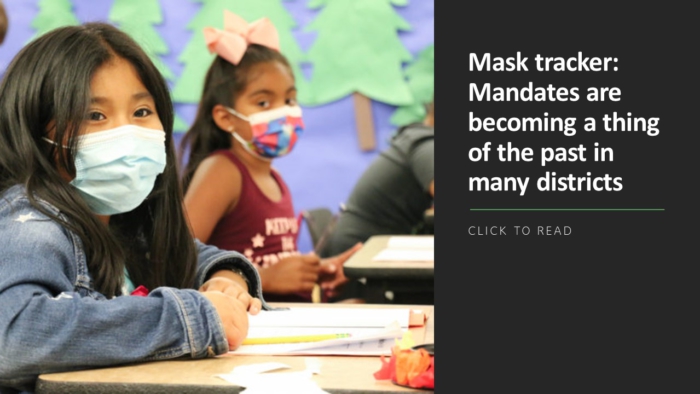To cope with increasing behavioral issues two years into the pandemic, administrators are giving students more time and space during the school day to seek support and recharge.
That’s the purpose of the wellness center created last year at Gilbert Elementary School in Garden Grove ISD near Los Angeles. It’s a collaboration between the school’s educators, social workers, counselors and mental health specialists, Principal Charise Santana says. “We have been able to provide a variety of services to kids with regard to social-emotional needs, from one-on-one counseling to group counseling to crisis supports,” Santana says. “And if their needs are more intense, we can refer them out.”
Educators, for example, can send students to the center when children are having a rough start to a school day or acting out in various ways. Counselors will work on calming strategies in the center, which is equipped with relaxing lighting and child-size furniture and sensory toys. A TV in the center will provide relaxing background visuals as counselors guide students in being still for a minute, and then for longer periods of time.
Through the center’s work, the school has already resolved counseling cases for at least 20 students. “We are definitely seeing kids incorporate strategies and taking time to breathe,” Santana says. ” They like to be able to express their feelings if they don’t feel they can do that a home or in the classroom.”
The school has also been offering additional social-emotional training to teachers and staff who supervise recess, a period during which behavioral problems have been most common. Some students who spent long periods learning remotely need more time to develop social skills, Santana says. “This year, we’ve had a lot more kids not just crying but displaying physical aggression toward other students and adults, and kids trying to elope and leave the area,” she says. “One of the important components of kindergarten, for example, is developmental time, learning to socialize. Because of COVID, kids couldn’t share items—that was pretty much non-existent.”
Power of peers
High school educators in California have also had to contend with more behavioral problems since students returned to full-time, in-person learning. Ninth and 10th graders, in particular, missed out on some important development steps earlier in the pandemic, says Ryan Johnson, principal of Enterprise High School in Northern California’s Shasta Union High School District.
More from DA: How to stop this wave of bad behavior from becoming the new normal
“We’re seeing a lot more juvenile behavior that we consider behind the normal developmental phase of a 9th- or 10th-grader,” Johnson says.
This year, the school has trained about 15 seniors and juniors to lead restorative justice sessions to hear the cases of students who have had behavioral problems. The idea behind the approach is to help these students understand and reflect on how their behavior has impacted students, teachers and staff. When there is a fight, for example, the restorative justice leaders will speak to both students individually and subsequently bring the two together for problem-solving sessions rather than simply handing down discipline or other consequences.
“The goal is the process, of having kids sit with each other to express how they were hurt,” he says. “In a lot of cases, it turns into peer conflict resolution and figuring how to move forward and feel better about the situation, which is something traditional discipline doesn’t bring about.”
The reason for this is that the students leading the sessions have more influence over their classmates than do faculty and administrators. “There’s an apprehension for students about having to explain themselves in front of their peers,” Johnson says. “It brings about more seriousness, and now students are starting to ask for a restorative panel to hear their cases.”



